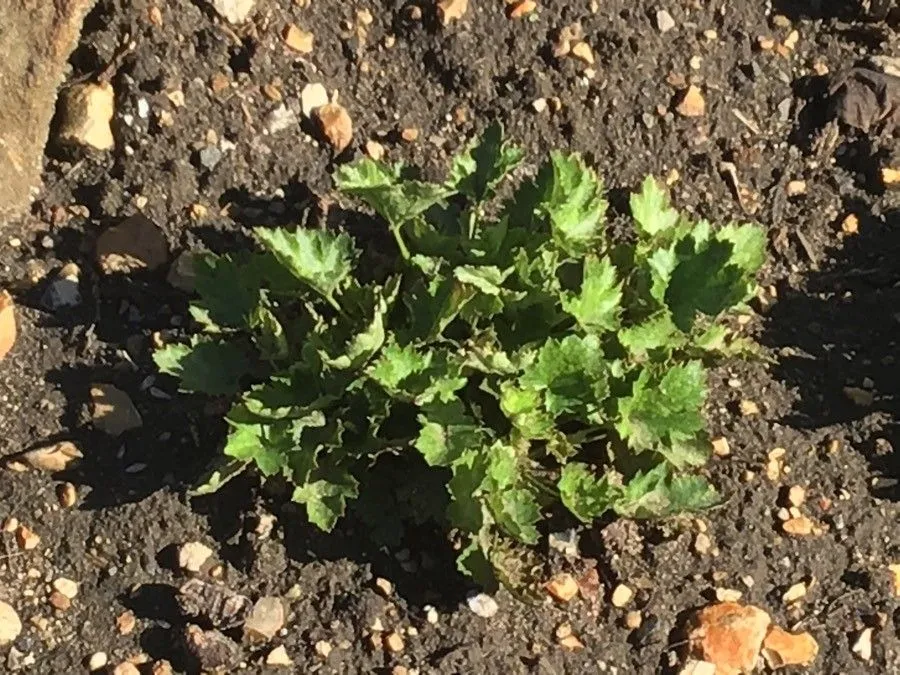
Author: (Pursh) Torr. & A.Gray
Bibliography: Fl. N. Amer. 1: 582 (1840)
Year: 1840
Status: accepted
Rank: species
Genus: Tolmiea
Vegetable: False
Observations: Alaska to Oregon
The Pick-a-back-plant, known scientifically as Tolmiea menziesii, is a fascinating and unique member of the Saxifragaceae family. First documented in the early 19th century and described in “Flora of North America” (1840) by the botanists Pursh, and later Torr. and A. Gray, this plant has intrigued botanists and plant enthusiasts alike for generations.
Native to the damp, shaded forests of the Pacific Northwest, the Pick-a-back-plant’s natural range extends from Alaska down through Oregon. It thrives in these cool, moist environments, often found in riparian zones and the understory of dense woodlands.
One of the most striking features of Tolmiea menziesii is its distinctive reproductive strategy. The common name “Pick-a-back-plant” comes from this plant’s unique ability to produce new plantlets on top of mature leaves. This phenomenon, known as vegetative reproduction, allows the plant to create clones of itself without relying solely on seeds. These tiny plantlets eventually develop roots and drop off, growing into independent plants nearby, which can lead to dense colonies over time.
Typically, the foliage of the Pick-a-back-plant is lush and green, with serrated margins that make it easily identifiable. The leaves are soft to the touch and have a slightly fuzzy texture. In the spring and early summer, the plant produces small, tubular flowers that range in color from greenish-yellow to brownish-purple, although they are not particularly showy and often go unnoticed amidst the greenery.
The Pick-a-back-plant is not only valued for its curious reproductive habits but also for its ornamental qualities. It is a favored choice for gardeners who are looking to add a touch of the wild, verdant forest to their shade gardens or for use as a houseplant. Its tendency to spread through natural vegetative propagation makes it an excellent ground cover in suitable environments.
In summary, Tolmiea menziesii is a captivating and resilient plant with a storied botanical history and a unique method of reproduction that ensures its continuous spread across the shaded forests of the Pacific Northwest. Whether appreciated in the wild or in a shaded garden nook, the Pick-a-back-plant remains an exemplary specimen of natural ingenuity in the plant kingdom.
Dan: mor-og-barn
Eng: pick-a-back-plant, youth on age, youth-on-age, piggyback plant, pick-a-back plant, pickaback, pig-a-back plant, thousand mothers
Nld: kindje-op-moeders-schoot
Swe: mor och barn
Fra: tolmiée de menzies
Cym: crudlys, crydlys
En: Pick-a-back-plant, Youth on age, Youth-on-age, Piggyback plant, Pick-a-back Plant, Pickaback, Pig-a-back plant, Thousand mothers
Da: Mor-og-barn
Nl: Kindje-op-moeders-schoot
Fr: Tolmiée de Menzies
Sv: Mor och barn
Cy: Crudlys, Crydlys
Taken Sep 28, 2020 by Diego Alex (cc-by-sa)
Taken Apr 12, 2022 by Gerrit Busser (cc-by-sa)
Taken Oct 10, 2021 by Krzysztof Golucki (cc-by-sa)
Taken May 8, 2022 by Monty Ritchings (cc-by-sa)
Taken Apr 30, 2021 by inge meulemeester (cc-by-sa)
Taken Sep 28, 2020 by Diego Alex (cc-by-sa)
Taken Jun 5, 2021 by Gerard Elliott (cc-by-sa)
Taken Nov 12, 2022 by Yeshua Jiménez Ortega (cc-by-sa)
Growth habit>: Forb/herb
Family: Myrtaceae Author: (F.Muell.) K.D.Hill & L.A.S.Johnson Bibliography: Telopea 6: 402 (1995) Year: 1995 Status:…
Family: Rubiaceae Author: Pierre ex A.Froehner Bibliography: Notizbl. Bot. Gart. Berlin-Dahlem 1: 237 (1897) Year:…
Family: Sapindaceae Author: Koidz. Bibliography: J. Coll. Sci. Imp. Univ. Tokyo 32(1): 38 (1911) Year:…
Family: Asteraceae Author: A.Gray Bibliography: Pacif. Railr. Rep.: 107 (1857) Year: 1857 Status: accepted Rank:…
Family: Fabaceae Author: Medik. Bibliography: Vorles. Churpfälz. Phys.-Ökon. Ges. 2: 398 (1787) Year: 1787 Status:…
Family: Aspleniaceae Author: (Cav.) Alston Bibliography: Bull. Misc. Inform. Kew 1932: 309 (1932) Year: 1932…